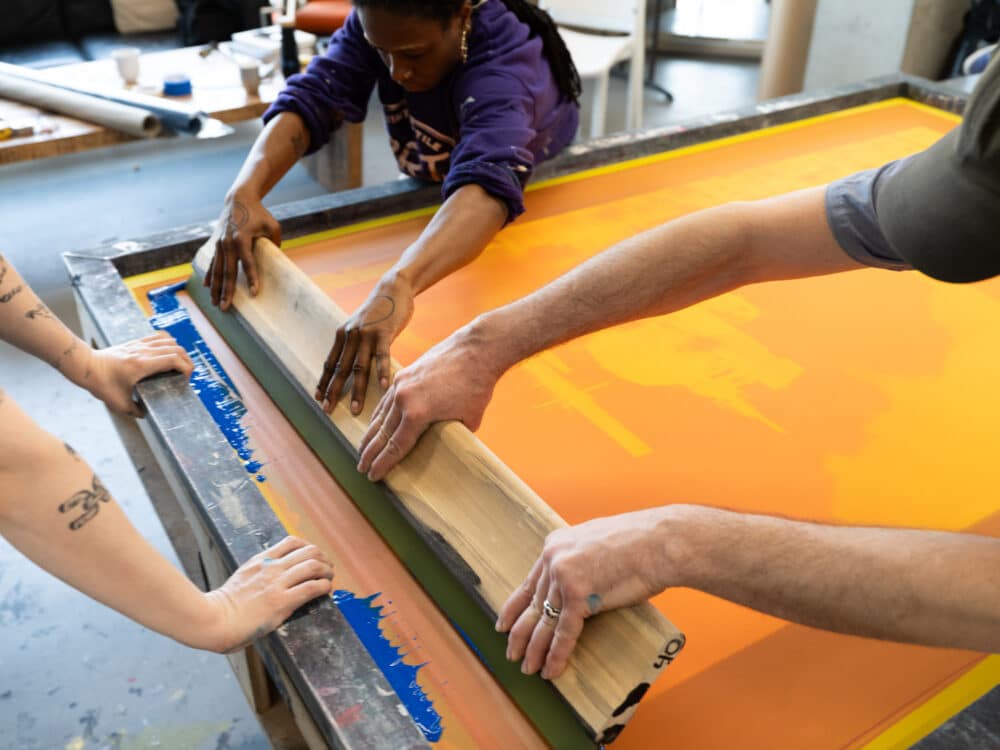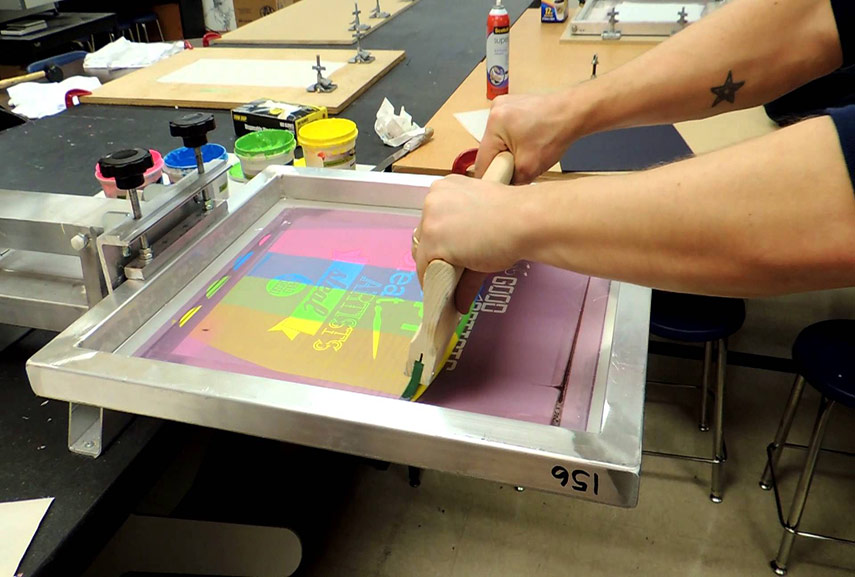ChatGPT said: Best ways to connect with 10:9 Design contact for service inquiries
The Necessary Guide to Recognizing Screen Printing and Its Versatile Uses
Screen printing has a rich history that dates back to old times, progressing right into an advanced technique used across numerous markets today. This overview checks out the ins and outs of the screen printing process, outlining its applications in home, style, and advertising and marketing style - 10:9 Design reviews. Recognizing these basics can open up creative possibility for both imaginative and business projects. The complying with areas will reveal necessary pointers and strategies to boost one's screen printing endeavors
The History of Screen Printing
Screen printing has origins that trace back centuries, its evolution mirrors the imaginative and technical innovations of various cultures. Stemming in ancient China, the method was originally made use of for decorating fabrics and later infect Japan, where it ended up being indispensable to Ukiyo-e woodblock printing. The approach shifted to Europe in the 18th century, where it obtained appeal among artisans and industrial printers. The innovation of picture solution in the 20th century revolutionized screen printing, permitting even more intricate designs and greater effectiveness. Musicians like Andy Warhol even more propelled its popularity, using the medium to create famous works that blended commercialism and art. By the late 20th century, screen printing had actually established itself as a flexible method, utilized in style, advertising and marketing, and art. Today, it proceeds to progress, incorporating digital innovation and expanding its applications throughout different markets.
The Screen Printing Process Explained
Screen printing changes artistic visions into substantial layouts via a collection of precise steps. A picture is produced and then moved onto a screen, commonly made of fine mesh fabric stretched over a framework. A light-sensitive emulsion is applied to the screen, which is revealed to light, setting in areas not covered by the image. After rinsing the unhardened emulsion, a pattern is formed.
Next, the screen is positioned over the substrate, whether it be fabric, paper, or one more product. Ink is after that pressed with the open locations of the pattern utilizing a squeegee, transferring the layout onto the substrate listed below. This process can be duplicated for several shades, needing different displays for each and every tone. The published item is treated making use of warm to ensure the ink adheres effectively, resulting in a resilient, lively layout prepared for use.
Kinds Of Screen Printing Techniques

Furthermore, specialty techniques, such as discharge screen printing, eliminate dye from the material to create softer prints, while aluminum foil screen printing uses metallic aluminum foil to accomplish a shiny surface (10:9 Design contact). Each strategy provides unique qualities, catering to numerous creative needs and manufacturing ranges, ultimately expanding the possibilities within the screen printing domain
Applications of Screen Printing in Various Industries

Additionally, the signs and marketing fields make use of screen printing for producing attractive display screens and banners. This technique permits vibrant colors and intricate layouts that capture attention. In electronics, screen printing is used for applying conductive inks to circuit card, necessary for component links. Furthermore, the home décor sector welcomes screen printing to create distinct layouts on textiles and wall surface art. Generally, screen printing offers as a crucial device throughout varied fields, boosting items with personalized and visually attractive graphics.
Tips for Effective Screen Printing Projects
While taking on a screen printing task, careful focus to information can substantially boost the last result. First, picking high-quality materials is necessary; this consists of the screen, inks, and substratums. Making use of appropriate mesh matters can impact ink deposition and information resolution. Preparation is equally vital; extensive cleansing of screens and appropriate exposure times assure crisp prints.
Next off, accurate registration is critical for multi-color prints. Utilizing placement devices can aid achieve precise layering. Furthermore, testing prints on scrap materials prior to manufacturing assists determine potential concerns without losing sources.

Often Asked Concerns
What Products Are Ideal for Screen Printing on Fabric?
Cotton and polyester blends are suitable for screen printing on material as a result of their resilience and ink absorption. In addition, specialized fabrics like silk or canvas can generate distinct appearances and finishes, enhancing the total layout quality.
How Do I Clean and Maintain Screen Printing Tools?
To cleanse and maintain screen printing equipment, one should on a regular basis clean displays with ideal solvents, check squeegees for wear, lubricate moving parts, and shop all products in a dry, dust-free environment to prolong their life-span.
What Are the Ecological Effects of Screen Printing?
Screen printing can have substantial ecological impacts, including chemical waste from solvents and inks, water use during cleaning procedures, and power intake. Eco-friendly materials and lasting practices are essential for decreasing these unfavorable impacts.
Can Screen Printing Be Done at Home Successfully?
Screen printing can be successfully done at home with the best materials and strategies. Enthusiasts can create quality prints, though success depends on their ability level, tools, and understanding of the procedure entailed.
What Are the Costs Connected With Starting a Display Printing Organization?

Beginning a screen printing business involves expenses for equipment, products, and work space. Preliminary costs generally vary from a few hundred to a number of thousand bucks, depending upon the scale, quality of equipment, and preferred manufacturing capability.
Screen printing has a rich background that dates back to ancient times, evolving right into an innovative strategy used across different markets today. One more technique, rotating screen printing, utilizes cylindrical displays, promoting continual printing on material rolls, thus boosting efficiency for large productions. Additionally, specialized methods, such as discharge screen printing, eliminate color from the textile to produce softer prints, while foil screen printing applies metallic foil to attain a shiny surface. In the fashion sector, screen printing is commonly utilized to produce dynamic layouts on apparel, enabling brand names to display their distinct designs. Cotton and polyester blends are perfect for screen printing on material due to their durability and ink absorption.